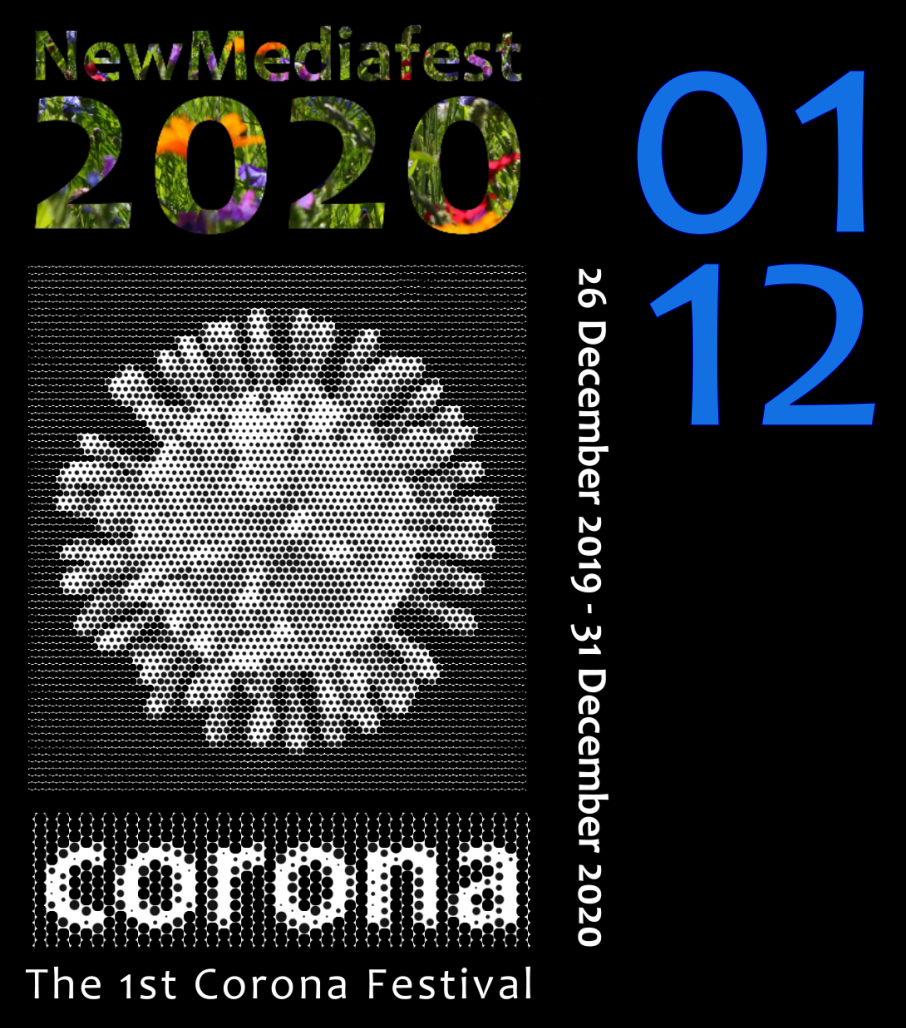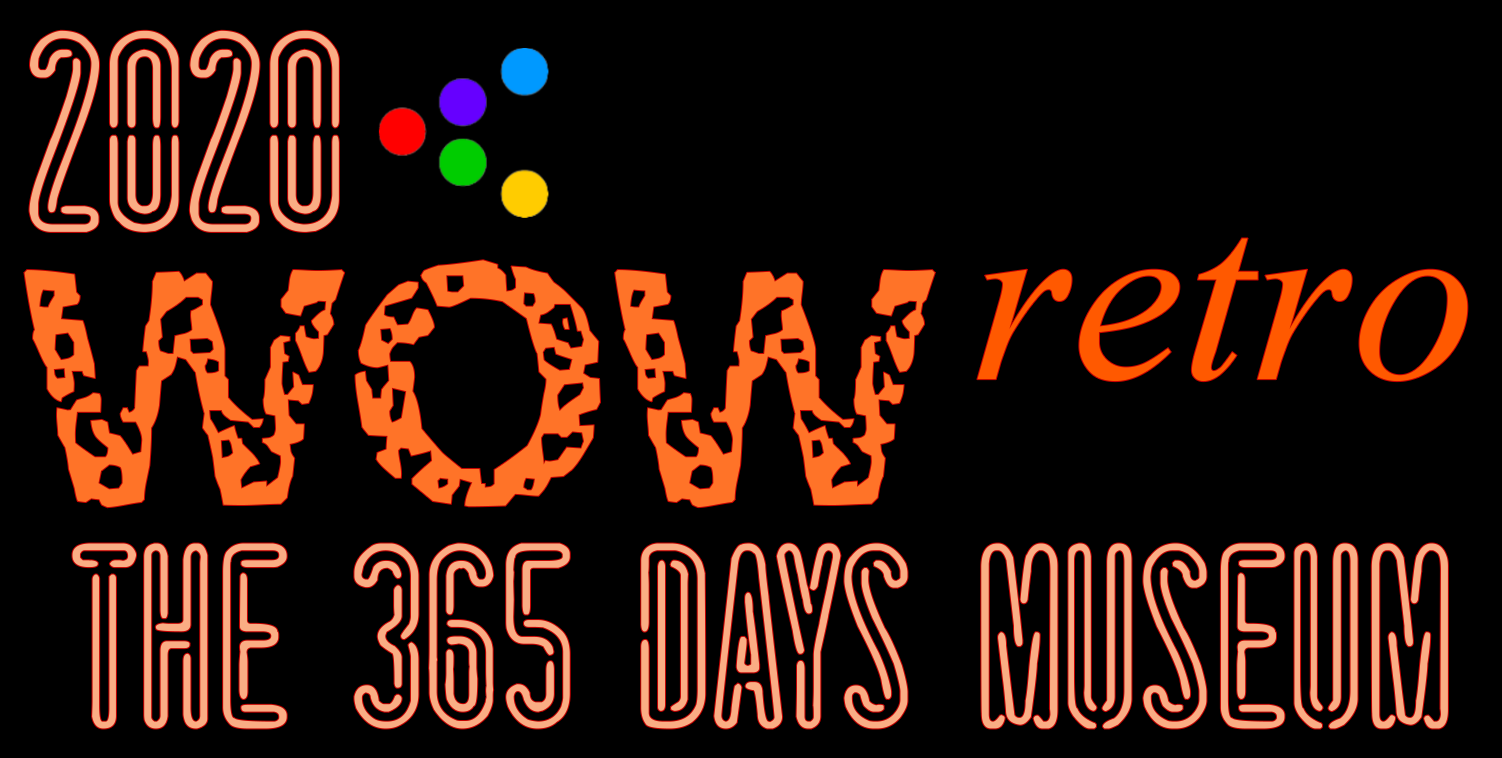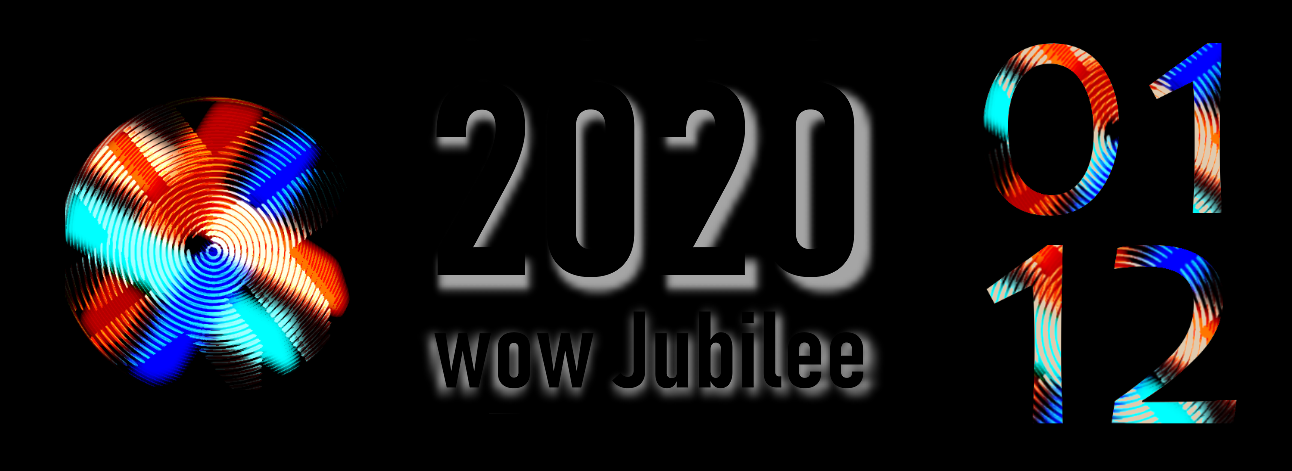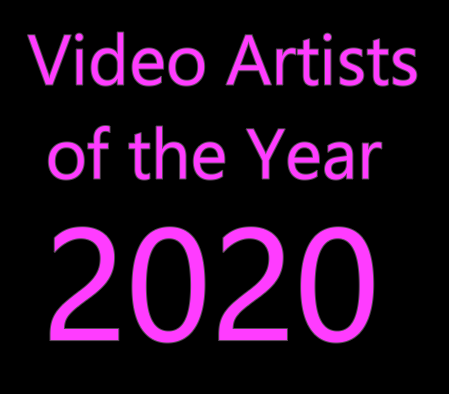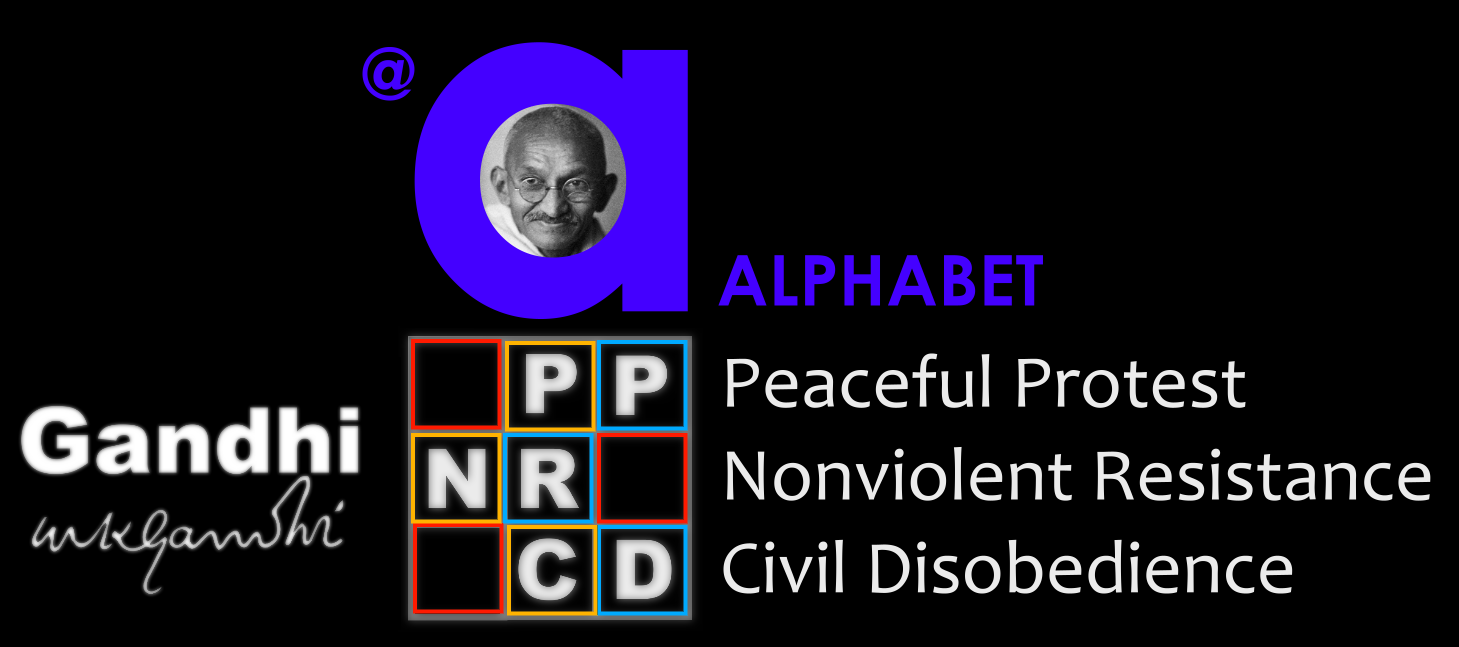video feature
Videoartist of the Month November 2020
Marcantonio Lunardi


Video Artist of the Month November 2020 – Marcantonio Lunardi

“I remember, when Marcantonio Lunardi contacted me for the 1st time in 2011 by submitting his video “Laboratorie Italie”, he was very upset that his video work would not be recognized in Italy. Something like that may happen, but I did not understand why, because his obvious talent could be felt through the 2 Minutes lasting video, so I included it in 8th edition of Cologne International Videoart Festival in 2012. But I was really surprised when he followed my open call for submissions for Shoah Film Collection in 2013, I hadn’t expected that from an Italian artist exploring Italian history, while the question of guiilt during the Fascist era is mostly brushed under the table. I was really curious what the artist would have to offer in sequence, and in this way one surprising video was following the next one until these days. Not yet fully recognizable in his first video, but the following ones gave evidence of his original concepts and artistic approach. And – that’s the wonderful thing experiencing works like from Marcantonio they demonstrate a challenging creativity – dealing with topics of social, political and cultural relevance, they are addicting so see more…and more…and..”
The solo feature covering 12 videos created during the past 10 years 2011-2020 is a big thanks to the artist for sharing all these audio-visual works, which are an inspiration not only for the individual viewer, but the entire artworld.

> see Marcantonio’s videos featured as a screening program @ Alphabet Cinema H
Marcantonio Lunardi
http://www.marcantonio.eu/
Graduated in documentary direction, since 2001 Lunardi has been involved in social and political documentation working on installations, documentaries and video art works. After the masters at the Festival dei Popoli in Florence with Michael Glawogger, Sergei Dvortsevoy,Thomas Heise and Andrés Di Tella, he began a journey in the field of moving images, experimenting with languages on the border between real cinema and video art. His works have been exhibited in prestigious international institutions such as the National Art Center in Tokyo, Galeri Nasional Indonesia in Jakarta, the Video Tage Center in Hong Kong, and the Museum on the Seam in Jerusalem , the Videoart Yearbook of the Visual Arts Department of the University of Bologna. Lunardi was also a guest of various experimental film festivals and video art such as N Minutes Video Art Festival in Shanghai, the Cairo Video Festival in Cairo, the Invideo Festival in Milan, Video Art & Experimental Film Festival – Tribeca Cinemas of New York. In addition there are numerous biennials of contemporary art including the Bi del Fin del Mundo in Chile and Argentina, the Chongqing International Biennial of Contemporary Art in China and the Bienal Internacional de Videoarte y Animación in Mexico
Participant in
VIP Interview Project
8th Cologne International Videoart Festival 2012
9th Cologne International Videoart Festival 2013
10th Cologne International Videoart Festival 2014
artvideoKOELN – audiovisual experience 1 2015
d/i/light Memorial 2013
d/i/light Memorial 2016
The W:OW Project 2017












11. 45th day, Pandemic Era, 2020, 03’:12”
10. Sanctuary, 2019, 06’:58”
9. Unusual Journey, 2017, 03’:22’’
8. The Cage, 2016, 05’:46’’
7. Anthropometry 154855, 2015, 03’:36’’
6. Public Space, 2014, 03’:45’’
5. 370 New World, 2014, 05’:08’’
4. No – The victims’ cry, 2013, 02’:30’’
3. The Choir, 2013, 04’:13’’
2. Default, 2012, 02’:53’’
1. Laboratorie Italie, 2011, 02’:20’’

A voice in control, an image in black and white. An aseptic, scientific environment, similar to the object on the foreground. The main characters in this work by Marcantonio Lunardi are three
small worms which fight in order to avoid falling down a vial placed below them. However, they are not alone, as there is also the strong, charismatic voice of a politician who has been omnipresent on the parliamentary life in Italy for the past twenty years: Silvio Berlusconi.
The artist has chosen not to show his face. His voice, his discourse is all that remains. The delay between what is heard and what is seen creates a short circuit which helps us in understanding the meaning of what the politician is saying; the animal, thus, become a metaphor for the Italian people.
“Laboratoire Italie” is the strong image of a Country that struggles against an economic but mostly moral crisis where art seems to be the only way to assert disagreement.

Default is a work of art on the disillusionment of a system which has reached a turning point. A man, alone, sits among the ruins of an abandoned factory in front of a phone. His hand holds the receiver and brings the handset to his ear. A series of answering machines, whose metallic tones, like a filter between the citizens and their Country, direct him in a vital suspension made only with waitings. His request for being heard is mediated with a series of numbers, recorded voices and impersonal sentences which bring him in a compulsive carousel of information and pauses.
Suspended in this non-place, where time expands and the collapse of society seems impending, a man can only wait for an answer which will never arrive. Mistaking a key, a timetable or a sentence means starting afresh. In the loop of the pre-recorded answers the nature of a Country is subtended, which is not able any more to speak to its citizens, more and more faraway, inadequate, absent.
The key to read this work lies in the static nature of the picture, which is based on the symbolic elements introduced by the author.
Under the ecclesiastic vaults of a factory of the early XIX Century, a liturgy takes place. The phone from the Sixties, emblem of the economic boom and the table, covered in white cloth to symbolise a sacred banquet, are the ritual props of this celebration. The phone call becomes a metaphysic event, like a prayer devoted to a faceless and nameless entity whose answered cannot be always trusted. From the point of view of the citizens, what the Countries usually call a default, becomes the communication gap in which the inability to comply with the terms of the social contract is resolved.

NO is a work about the victims of nazi-fascist cruelty. Every NO is the cry of a victim, is the refuse of abandon the life. NO is the contrast between the normal aspect of this bucolic landscapes and the dramatic events happen on the Tuscany lands between 1944 and 1945. NO is also the contemporary reject of the all totalitarian violence. NO is narration, NO is membership and identity because only through the force of collective memory is possible the survival of the human society. The landscapes of the film are the real places of the nazi-fascist massacres.

In his leave-taking speech to his students, a professor from the
university said that in Italy the culture is totally relegated to the
television. This reflection rooted deeply into Lunardi’s imagination
and originated the spark which lead to the vision represented in this
work. The choir translates into images the destruction of the
civilisation of culture to the profit of the civilisation of
entertainment or, better: of mass consumption.
A twine of voices expands in the air, caressing the romanic
architecture and the sacred images. Fastly a poliphonic quartet takes
the scene up, but the singers’ head is a monitor which broadcasts
their recorded image. Each of them holds a monitor because their
performance exists only if mediated by the television media. Whatever
is not television does not exist because, nowadays, the monitor
represents the only interface through which what remains of culture
can be broadcast. The world of the cathod ray tube has overcome the
world of books, of theatre, of cultural places and of all those means
which convey knowledge. The television has become a step-mother that
cannibalizes everything while everything which is not broadcast simply
does not exist anymore. The universities and the schools surrendered
to the television barkers and to those who spread false myths. The
culture is sold together with advertisement like in talk shows. The
advertisement, which determines and rules everything, burst into the
singing, breaks the performance, alters the tale and mixes up with the
performance dimming the faces and deforming the harmonies. The Choir
becomes thus the emblem of a decadence where a whole heritage
surrenders to the necessities of a system, that is television, which
has completely re-defined the fruition of culture.
The integration of advertising extracts in the harmonic composition
suggests that the commercialization is a force which destroys culture,
which thus melts into a flattening mixture that chokes all identities.
The Choir tries to underline a contrast which is rarely noticed,
provided that one listens to the complex language hues. On the one
side, there is the painful awareness of a declining world and on the
other the manipulative superficiality of the market show, which dulls
the audience with the calculated futility of gingles. This work,
combining depth and superficiality, displays the current obscenity:
the king is naked, and as the beautiful clothes disappear, there only
remains the grotesque reality of fiction.

370 New World is a work on the new solitude created by the economic and social crisis which crossed the whole Europe in the last ten years.
The human isolation which is displayed to the spectator is, by now, part of the everyday life of many people. The author thus introduces his creative work as a kind of mirror in which the spectator may recognise some details of his or her own life.
Despite the video focuses on the new media, Lunardi does not want to make any accusation.
The work, in fact, is placed beyond the commonplace debate which stigmatizes technology and the social networks. The author simply tries to put in evidence the different solitudes which surround the various characters who live in his work.
The first solitude is imposed by an external circumstance, that is the economic crisis. The glances of the artisans, of the artists, of the workers are lost on a distant horizon, and lost into the research of a job which is, by now, disappeared. The crisis deprived them of their essence and they have freezed into a state of paralysis which transformed them into the living waste of an evolving society. New World focuses on the changes which are happening now, and which are happening too fastly to prevent people to break down.
The other solitude represented in this creative work is the one generated when the new means of communication replaced the human relationships. The mechanism itself, and not the social networks, is negatively judged, because it gives people a powerful excuse for mutual indifference.
They actually are important tools, but they are often used compulsively so that the individual finally lives emotionally detached from everyday life. By indulging into the screen’s light, we are released from the real problems of life and of living together.
The work closes on a man who stubbornly seeds the asphalt. That peasant, with that peculiar gesture, strongly asserts his will to get back a certain concreteness, in the name of his link with the mother earth. Twisted, dried up, deprived of meaning, the earth is always there to prove our original essence of social and natural animals.
The act of seeding becomes thus a fight against the asphalt which covers the square dominated by the monolith of an abandoned mill, which becomes the symbol of the industrial and economic decay.
We do not know wether the peasant will win that unequal fight. But we do know that his battle is the only ethic choice possible.

Public Space represents a reflection on the foetus in the mediatic
representation and, as a consequence, on the body of women which,
during the pregnancy, becomes a “public space”. Public Space is not a
work on abortion or against abortion: this work is placed outside and,
in a certain sense, “before” this kind of debate.
The video by Lunardi originated, as many of his works, from a studio experience.
During the visual anthropology classes at the University of Siena, the
director met Barbara Duden and her work, particularly her essay on the
body of women as a public space (Der Frauenleib als öffentlicher Ort)
where the scholar analyses the changes in the perception of pregnancy
from the Sixties onwards.
The recent medical devices have totally modified how a woman lives her
pregnancy and how she imagines the child. The notions and the language
itself have radically changed. In the past, there was an “inside” that
must be felt because it could not be seen, whereas nowadays the
pregnancy is basically certified by the possibility of seeing through
the ultrasound scans.
Duden studied the pregnancy in order to understand how the foetus was
created or, better to say, how the “ghost of the foetus”, that is when
the image prevails on the feeling. This aspect deeply affected
Lunardi, so he felt the necessity to translate this idea in a video
work.
Pregnancy transformed from and experience of feeling into an exercise
of watching from the inside. Somehow the experience which took place
under the skin has been made public and mediatic through the use of
diagnostics.
Until the Sixties there was a clear perception of the difference
between the foetus and its visual representation, whereas nowadays we
consider existing only what can be shown to us. We stress more what we
can see in a scan than the physical perception of the future mother.
We believe our sight to be unlimited so much that the skin is not a
frontier anymore and we lost the ability to distinguish what we see
and what it is shown to us.
Lunardi is not so interested in the pregnancy itself but rather in the
tendency to visualize everything, which, at the end, gives the status
of reality only to what can be recorded through some devices. The
practice of watching has brought the visual perception to a dominant
dominant position on the other senses so much that touch, sense of
smell, taste and intuition are excluded.
In conclusion, Public Space represents a reflection on the
preponderance of the society of the image on all the areas of our
life; a preponderance which goes to the extreme of the moment of
conception.

Anthropometry 154855 focuses on the process of depersonalisation that
a subject undergoes when he or she is imprisoned in the taxonomic
mechanism of bureaucracy.
The title, that clearly recalls the anthropometry through which Yves
Klein established the canon of the human proportions, immediately
underlines its specific identity by adding a number to it.
154855 is a matriculation number: it is in fact the number which the
director gave to the protagonist of his movie, a man whose
anthropometric parameters have been catalogued throughout his life up
until the archiving of his last breath.
The intuition this work is based on is the image of the measuring of
the human body as an allusion to the classification procedures in the
field of Nazi eugenics. This image is the summary of a long reflection
and of a long research in which the tales of the victims of political
persecutions, the knowledge of the Nazi anthropometry and the study of
the interrogation techniques manuals, which were declassified during
the Nineties, merge.
In the manuals there are precise directions on torture but there are
no cruel scenes or brutal descriptions. Actually, what is commonly
considered abominable, is the simple result of a bureaucratic and
aseptic procedure. Everything is reduced to this: pain and death are
only procedures. The discipline of classification, when applied to a
system of social organisation, becomes an instrument of discrimination
and annihilation up to the point that a man is transformed in simple
numerical series.
The movie displays the progressive dispossession of his identity
through the collection of his anthropometric measures, of his fluids
and eventually of his last breath, which is then regularly catalogued
and archived.
During his trial, Eichmann said that he would not have felt at ease if
he had refused to do, with zeal and chronometric precision, what he
had been ordered.

Food, water, book, language, beauty, earth, sea, love, warmth, man,
woman, desire. What is our cage dividing us from? Is it blocking us?
Or is it protecting us? The barbed wire is a simple structure, a
cylinder-shaped object deformed by a light twisting, which stretches,
in the room, from one point to another.
Every 10 centimetres there is a small lock: its delicate shape breaks
the linearity of the barbed wire like a lock gracefully curled. But,
far from being delicate, those thorns twirl around life preventing its
movements, inducing wounds, suffering and pain.
The barbed wire, thus, marks the border between existing a
non-existing, between living and non-living, between being seen and
being invisible.
Lunardi has patiently built his cage: it is an iconic, cold and
surreal object. He has welded the wire fence to the main structure, he
has assembled the frames and the hooks. Wire after wire, pipe after
pipe, bolt after bolt he has shaped the catharsis of his nightmares
and he transformed his inner obsession in a tangible object. The cage
he is alluding to is that in which we live in and which has become
more and more tight-fitting. It is a sort of coffin in which life
continuously moves from one corner to another, completely alone,
perpetually searching for an horizon which is continuously blocked.
One can look outside the cage whenever one wants to, but the
perception is always distorted, altered and blocked. Thus, a book
becomes a visual vibration confused by the iron locks, the works of
art are cut in pieces by the metallic wire. One cannot find a single
corner allowing a complete vision. Brushing against the leaves of a
tree moved by the breeze or enjoying the touch of a beloved one become
impossible enterprises.
The cage envelopes us with its barbed wire from our innermost roots,
dragging us in the shadow. This work introduces the solitude imposed
on us by the cages we are living in. Sometimes we are aware of them,
but sometimes we are not: Lunardi, therefore, shows with his work what
some of us find too difficult to acknowledge. In the typical style of
the author, the work has been built around some tableau vivants which
represent, through the body of the actors, some of the conditions
which we experience on a daily basis in a society which is pervaded by
egotism.
The nature of egotism cannot be simplified with the notion of
selfishness, because it represents the perversion of those who connect
each reality to themselves and themselves only. Therefore, the
introspective path introduced with The cage aims at putting in
evidence those bonds which force the lives of the individuals into
strict boundaries which can only result into the refusal of the other
human beings. Moreover, another paradoxical and grotesque consequence
of such boundaries is that they lead to the refusal of one’s own self.

The work of Lunardi, whose characters had never spoken before, is open
by a word: “swim”, immediately followed by a phrase: “I’m human”. This
words are pronounced in the African languages of protagonists. Indeed
this video tell about their unusual journey and the paradoxes of its
narration in the Occident. An African man swimming in front of a
camera connected to a TV that shows the image to a Caucasian man
sitting in a armchair. This is the short-circuit represented by
Lunardi following the path of political asylum seekers in Europe. In
this video the stories of each of them become, in the face of public
opinion, a dress from which they can no longer get rid of. Exactly
like the thermal blankets that envelop them upon their arrival.

Traditional trades and crafts represent an enclave in the flow of history and it is exactly this feature that identifies them as isolated entities.
They are time bubbles in which movements or gestures acquire an ancestral dimension. They recover some long-lost traditions which survive exclusively in the hands and in the eyes of those who still practice them.
Some shrines, containing a series of craftsmen – as if they were rarities – while they wait to dissolve completely, represent what remains of such traditions.

Time has become chaotic in quarantine, sometimes terribly fast, sometimes desperately slow. Time that is both full and empty: human relationships, emergency, sorrow, loneliness, uncertainty, neuroses, restrictions and loss. Sometimes I feel like an animal that will gnaw its leg off to escape from a trap. We are in, we are out; it’s better, it’s worse; it’s death, it’s rebirth. We don’t know, we don’t really know anything. We have gone back to being vulnerable, everything is still confused, everything still to be explored. I no longer recognize myself, I am different from the way I was here, and I am no longer how I was before. Who knows if I will be like that again. Maybe it was just an intermission or maybe I still have to figure out who I have become in this new Pandemic Era.
text by Ilaria Sabbatini





